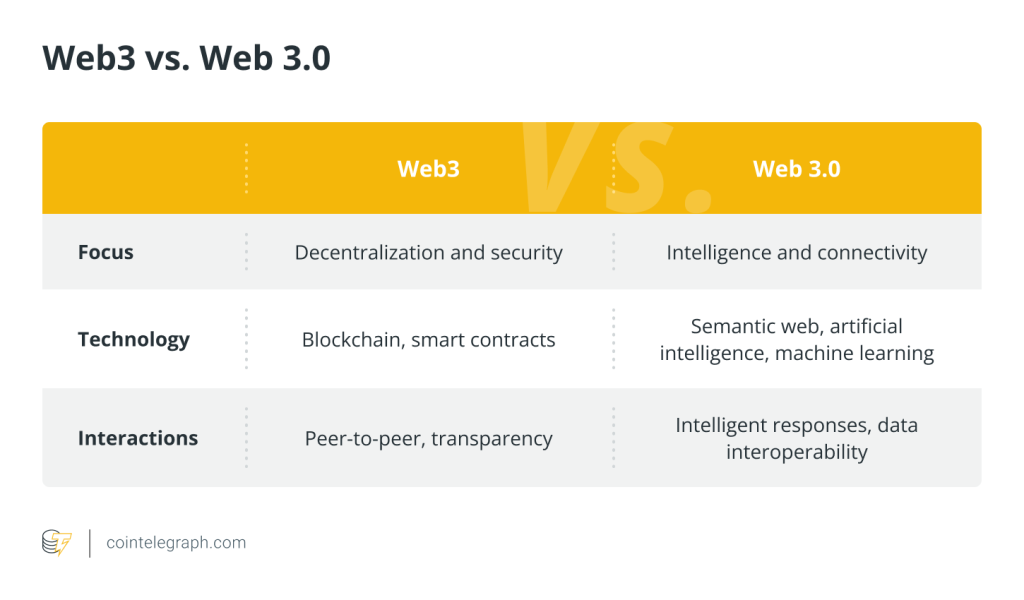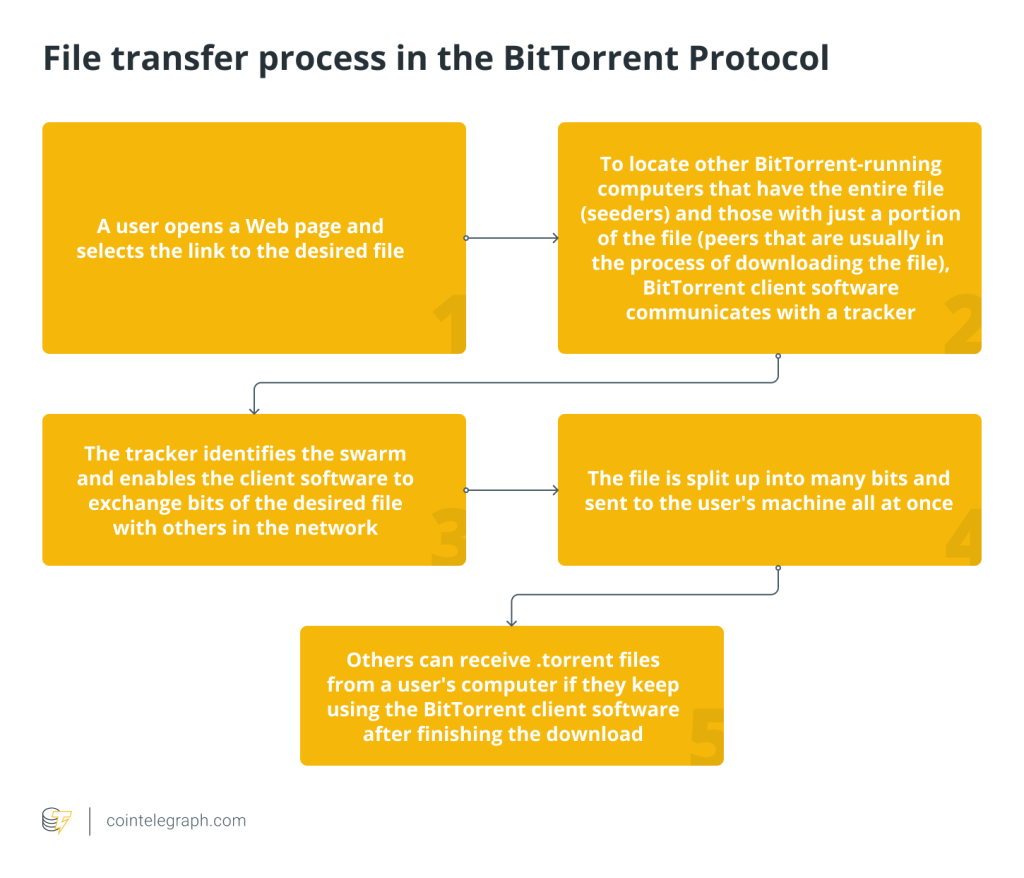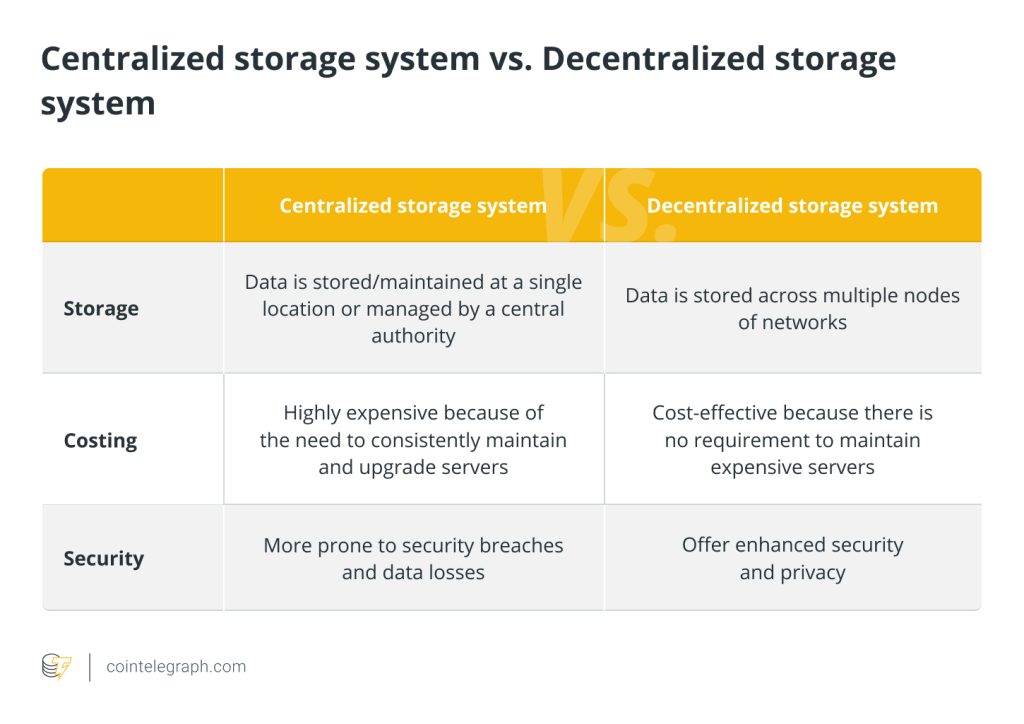What is the InterPlanetary File System (IPFS), and how does it work?


A decentralized internet
Although the World Wide Web is a global network, it remains predominantly centralized in terms of data storage. Servers, whether physical or virtual, are housed in large server farms or cloud platforms, typically owned by a single company. To access information on these servers, users must establish a Hypertext Transfer Protocol (HTTP) or Hypertext Transfer Protocol Secure (HTTPS) connection to the specific server, which serves as the centralized point for data retrieval.
HTTP, as the primary means of transferring files over the internet, has its drawbacks. It functions effectively only for small files due to its cost-effectiveness and falls short in exploiting innovative file distribution techniques. Meanwhile, new challenges emerge constantly, including transmitting petabyte-sized data sets, managing high-volume real-time media streams, and ensuring file permanence. Essentially, every issue boils down to the need for greater availability and accommodating larger files in a decentralized manner.
Several techniques, including mirror servers and content delivery networks, effectively distribute content from an “origin” server to consumers by deliberately storing the content close to the end users. However, it is crucial to remember that despite these measures, there are still only a few areas where files can be accessed.
To tackle these challenges, the InterPlanetary File System (IPFS) has been developed. IPFS, an innovative Web3 phenomenon, represents a decentralized network implementation, representing a significant advancement in file storage and retrieval. IPFS offers a promising alternative that empowers users with greater control and a more resilient internet experience.
What is IPFS, and how does it work?
As implied by its name, the IPFS protocol is designed to establish a fully decentralized system capable of functioning across places as disconnected or as far apart as planets.
IPFS was introduced in 2015 by computer engineer Juan Benet and maintained by the Protocol Labs team who also created Filecoin (FIL), a cryptocurrency and cooperative digital storage and data retrieval method based on blockchain technology.
Basically, IPFS is a peer-to-peer (P2P) distributed system for storing, accessing and sharing files, websites, applications and data. IPFS builds upon the decentralized environment and incorporates distributed and bandwidth-saving techniques from torrents.

The key distinction between the centralized and decentralized web lies in how data is identified and retrieved. In the centralized web, people depend on trusted entities to host their data and access it using location-based Uniform Resource Locators (URLs).
In contrast, the IPFS network uses a content-addressed system, where the content itself plays a key role in helping people to locate what they’re looking for. In IPFS, each piece of content is identified by a unique hash called IPFS Content Identifier (CID). This means that the content is stored and retrieved based on its hash rather than its location, making it much harder to censor or manipulate.

The decentralized web of IPFS consists of interconnected computers called nodes that use distributed hash tables (DHT), a decentralized storage system that provides lookups and storage for the mapping of keys to values. In a DHT, each node is accountable for specific keys and mapped values and can effectively retrieve the corresponding value for a given key.
IPFS nodes store data and make it available to anyone who requests it. When a file or web page is requested, a copy of the file is cached on the requester’s node. As more people ask for the same data, additional cached copies are created. Subsequent requests for the file can be fulfilled by any node or combination of nodes that have it. This way, the responsibility of delivering the data and fulfilling requests is shared among multiple locations, making it more efficient and accessible.
Is IPFS a blockchain?
While IPFS and blockchain are both decentralized technologies, they serve different purposes, have distinct characteristics, and cater to distinct use cases. IPFS focuses on creating a global, decentralized network for storing and sharing files. It aims to improve the efficiency and resilience of traditional web protocols by allowing files to be stored in multiple locations, making them resistant to censorship and ensuring availability even if some nodes go offline.
On the other hand, blockchain serves primarily as a decentralized ledger, recording transactions or data in a transparent and tamper-proof manner. Blockchain relies on consensus mechanisms and cryptographic algorithms to ensure the integrity and security of the data stored on the chain. On top of that, it is often used for decentralized applications (DApps) and involves cryptocurrencies, smart contracts and, for instance, decentralized finance (DeFi).
While IPFS can be used in conjunction with blockchain technology, they serve different purposes. IPFS provides a decentralized storage and distribution system, while blockchain provides a decentralized and transparent way to record and verify transactions or data.
What is IPFS used for?
IPFS serves various purposes, ranging from delivering content globally, storing files securely and facilitating efficient file sharing. IPFS can act as a complementary file system for public blockchains and other P2P systems. It has the potential to enhance the scalability of DApps on platforms like Ethereum. By integrating with Ethereum’s smart contracts, IPFS can provide secure and cost-effective storage capabilities within the crypto ecosystem, improving Ethereum’s overall performance.
Additionally, IPFS, along with Filecoin, creates incentives for data storage. This combination can play a significant role in the development and storage of the data of nonfungible tokens (NFTs).
Mainly, IPFS has a wide range of applications, from enhancing DApps scalability to revolutionizing NFTs by ensuring helpful data records.
Is IPFS traceable?
Each IPFS node has a public PeerID that can be used to track the associated IP address over time by looking it up in the DHT. As a protocol for P2P data delivery and storage free for everyone, IPFS is a public network. Nodes involved in the network store data that is linked to globally consistent CIDs and broadcast their availability to other nodes through publicly accessible DHTs.
Thus, while IPFS traffic between nodes is encrypted, the fundamental metadata that nodes disclose to the DHT, including their unique node identifiers (PeerIDs) and the CIDs of data they offer, is accessible to the public and can be tracked. Anyone can access these types of data on IPFS.
What are the downsides of IPFS?
One of the main issues lies in the adoption of IPFS. Despite its promising features, widespread adoption has been relatively slow compared to traditional web protocols. Overcoming this challenge involves raising awareness, addressing user concerns, and providing robust tools and resources to facilitate the transition to IPFS. Achieving broader adoption requires a fundamental shift in how we access and distribute information, which may take time for users and organizations to embrace fully.
Interoperability is also a crucial factor for IPFS. While it aims to replace HTTP as the primary protocol for accessing the internet, it needs to integrate with existing web protocols to ensure seamless interoperability. This integration may necessitate significant changes to the current web infrastructure, potentially impeding adoption rates.
Incentivizing users to contribute their resources to the IPFS network is another challenge. As IPFS relies on a P2P network for data distribution and storage, creating effective incentives and rewards mechanisms becomes imperative. Encouraging active participation and resource allocation from users will play a vital role in ensuring the sustainability and growth of the IPFS ecosystem.
Security is an ongoing concern for any technology, including IPFS. Willing to share their data, users wonder if it is safe to use IPFS. While IPFS employs content addressing and encryption to safeguard data stored on the network, there may still be potential vulnerabilities and security risks that need to be addressed. Continuous efforts to enhance security measures and mitigate potential threats are essential to maintain the integrity and confidentiality of user data within the IPFS network.
And last but not least, although the decentralized and distributed nature of IPFS provides advantages in terms of security and privacy, it is more challenging to update due to the inability to perform internal changes, requiring regular and systematic releases of new versions to incorporate upgrades.
By fostering adoption, ensuring interoperability, creating effective incentives and enhancing security, the IPFS distributed file storage protocol can overcome these obstacles and realize its potential as a transformative technology for decentralized and resilient file management.
The future of IPFS
The IPFS P2P file-sharing network was first introduced in 2014 and has since gained popularity due to its unique features, which offer an alternative to the traditional client-server architecture. The protocol has already revolutionized the crypto sphere by enhancing the scalability of DApps and gained traction in various industries, including finance and media among others. IPFS’ decentralized nature and content-addressable system make it a key player in the future of web technology.
The potential for IPFS to reshape how we store, share and access information on the internet is significant, and as the technology continues to evolve, we can look forward to further advancements and adoption in the future.
Written by Sasha Shilina






… [Trackback]
[…] Information on that Topic: x.superex.com/academys/beginner/3148/ […]
… [Trackback]
[…] Read More to that Topic: x.superex.com/academys/beginner/3148/ […]
… [Trackback]
[…] There you will find 89883 more Info on that Topic: x.superex.com/academys/beginner/3148/ […]
… [Trackback]
[…] Here you will find 87399 more Info to that Topic: x.superex.com/academys/beginner/3148/ […]
… [Trackback]
[…] Read More Information here to that Topic: x.superex.com/academys/beginner/3148/ […]
… [Trackback]
[…] Find More here on that Topic: x.superex.com/academys/beginner/3148/ […]
… [Trackback]
[…] There you will find 12190 additional Info to that Topic: x.superex.com/academys/beginner/3148/ […]
… [Trackback]
[…] There you will find 73678 more Information to that Topic: x.superex.com/academys/beginner/3148/ […]
… [Trackback]
[…] Find More Information here on that Topic: x.superex.com/academys/beginner/3148/ […]
… [Trackback]
[…] Find More to that Topic: x.superex.com/academys/beginner/3148/ […]
… [Trackback]
[…] Read More Information here on that Topic: x.superex.com/academys/beginner/3148/ […]
… [Trackback]
[…] Read More here to that Topic: x.superex.com/academys/beginner/3148/ […]
… [Trackback]
[…] Information on that Topic: x.superex.com/academys/beginner/3148/ […]
… [Trackback]
[…] Read More here on that Topic: x.superex.com/academys/beginner/3148/ […]
… [Trackback]
[…] Read More to that Topic: x.superex.com/academys/beginner/3148/ […]
… [Trackback]
[…] Read More on on that Topic: x.superex.com/academys/beginner/3148/ […]
… [Trackback]
[…] Info to that Topic: x.superex.com/academys/beginner/3148/ […]
… [Trackback]
[…] Find More here to that Topic: x.superex.com/academys/beginner/3148/ […]
… [Trackback]
[…] Read More on that Topic: x.superex.com/academys/beginner/3148/ […]
… [Trackback]
[…] Find More Information here to that Topic: x.superex.com/academys/beginner/3148/ […]
… [Trackback]
[…] Find More here to that Topic: x.superex.com/academys/beginner/3148/ […]
… [Trackback]
[…] Read More on that Topic: x.superex.com/academys/beginner/3148/ […]
… [Trackback]
[…] Read More on on that Topic: x.superex.com/academys/beginner/3148/ […]
… [Trackback]
[…] There you can find 99757 more Info on that Topic: x.superex.com/academys/beginner/3148/ […]
… [Trackback]
[…] Info on that Topic: x.superex.com/academys/beginner/3148/ […]
… [Trackback]
[…] Find More Information here on that Topic: x.superex.com/academys/beginner/3148/ […]
… [Trackback]
[…] Information to that Topic: x.superex.com/academys/beginner/3148/ […]
… [Trackback]
[…] Read More here on that Topic: x.superex.com/academys/beginner/3148/ […]
… [Trackback]
[…] Find More Info here to that Topic: x.superex.com/academys/beginner/3148/ […]
… [Trackback]
[…] There you will find 9008 more Information to that Topic: x.superex.com/academys/beginner/3148/ […]
… [Trackback]
[…] Read More Information here on that Topic: x.superex.com/academys/beginner/3148/ […]